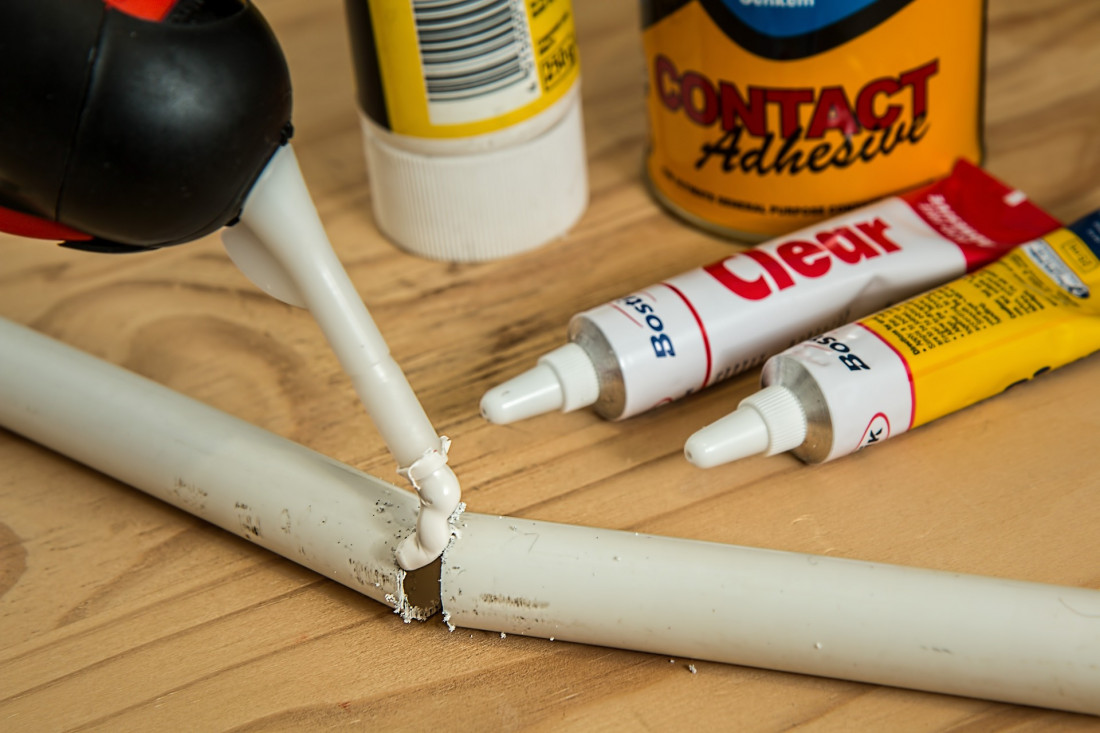Adhesives have come a long way in recent years. The demand for ever stronger bonds has grown, as the need for replacing stitching, nails, and bolts has grown; and as materials have adapted, so have adhesives. Today, people are less likely to need to bind wood and metal together, as the use of rubber, plastic, ceramics, and glass has become more popular.
More modern materials, such as hydrogels, have even more elasticity, and are being used in all manner of places, for example modern robotics, contact lenses, and soft bone replacement treatments (such as in the vertebrae). They are called hydrogels because of the large amounts of water they contain, and they are highly adaptable materials.
However, up until now, there has not been an adequate adhesive to join two hydrogels together, as most modern glues turn rigid and stiff when they bond. When the hydrogels move, they create stresses and fractures in the adhesive, thus weakening the bond.
But now a team of researchers from Johannes Kepler University, in Linz, Austria, have developed a glue that is able to maintain high levels of flexibility, even after it has bonded.
The research team began by examining the properties of modern, household, superglue, and found that while it was a strong adhesive, “…it would not work [as a hydrogel adhesive] because when it dries, it becomes hard—that means that when two stretchy materials are bonded together, the glue cracks when both are stretched. That led them to conclude that what was needed was a non-solvent—a material that would not dissolve into the glue and would prevent it from becoming hard.”
The resulting adhesive, as the scientific journal Phys.org reports, “is a glue made with cyanoacrylates (the adherents in superglue) diluted with a non-solvent. When it is applied to two surfaces, the researchers explain, it diffuses into their outer layers and is triggered to polymerize by the water content, such as in a hydrogel. Put another way, they say that the glue becomes tangled with the polymer chains in a gel, creating a very tight bond—and thus far, it has worked really well.”
You can learn more about this discovery on the YouTube video here.
The highly successful results have been published in the online research sharing journal Science Advances. Where the report notes that the new adhesive is, “… a facile, universally applicable method for instant tough bonding of hydrogels to a wide variety of materials—from soft to hard—with unprecedented interfacial toughness exceeding the intrinsic fracture strength of the gels.”
The report continues by outlining exactly how wide a range of materials the glue was tested on, namely, “We carried out the 90° peeling tests of hydrogels bonded to poly(methyl methacrylate) (PMMA; 3 mm, Evonik Industries), PET (1 mm, Evonik Industries), PI (125 μm, Kapton DuPont), nitrile rubber (VWR nitrile examination gloves), polyisoprene rubber (460 μm, Oppo Band 8016), VHB4905 (500 μm, 3M), PDMS (Dow Corning Sylgard 184), Ecoflex (Ecoflex 00-30, Smooth-On), leather and bone (pork shoulder blade), chromium-coated metals (aluminium and copper), and chromium-coated glass and to hydrogels. We note that silicone elastomers (PDMS and Ecoflex) require surface pre-treatment with a commercially available primer (Loctite SF770, Henkel) to promote wetting of the adhesive dispersion; all other materials were used without pre-treatment.”
It is interesting to note the research team’s inclination to glue an electronic circuit to human skin. Whether this superglue will herald a new wave of consumer wearable electronics or not, remains to be seen. However, as hydrogels are permeable, the adhesive could be used to make flexible skins that delivery water soluble drugs, or adhere electronic sensors almost directly to the body. As the report notes, “We apply our approach to create a new set of soft machines and electronics and to demonstrate instant healing, adaptive optics, soft actuators and generators, tough batteries, and hydrogel electronic skins. Applications range from robotics, energy harvesting from renewable sources, consumer electronics, and wearables, to a new class of medical tools and health monitors.”
Clearly an adhesive of such versatility has numerous applications, for its water-permeability, coupled with the glue’s quick fixing time, its flexibility, its strength, and ultra-thinness, opens up a world of possibilities. Anywhere, where flexible, movable parts need to be connected – strongly – is a place where his glue could be stuck.
So where would you stick it?
Photo Credit: Soft Electronics Laboratory, Linz Institute of Technology

